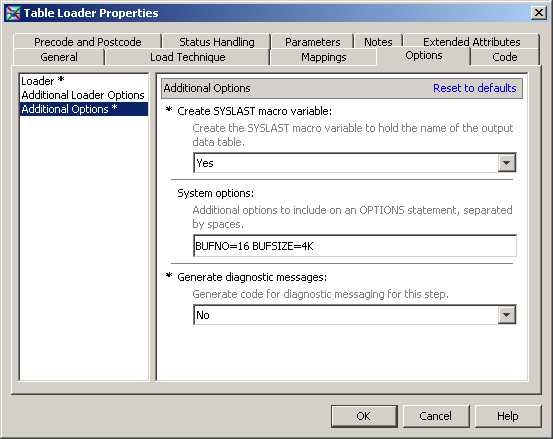Buffering Data for Base SAS Tables
-
tuning the size of table pages on disk by using the BUFSIZE= system option. SAS uses the BUFSIZE= option to set the permanent page size for the SAS table. The page size is the amount of data that can be transferred for an I/O operation to one buffer. If you know that the total amount of data is going to be small, you can set a small page size, so that the total table size remains small and you minimize the amount of wasted space on a page. Large tables that are accessed sequentially benefit from larger page sizes because sequential access reduces the number of system calls that are required to read the table.
Besides specifying SAS
system options on the command line or inside a SAS program with the
OPTIONS statement, you can set the BUFSIZE= and BUFNO= system options
in SAS Data Integration Studio. For example, you can set these System
Options in the properties window for a table loader transformation.
